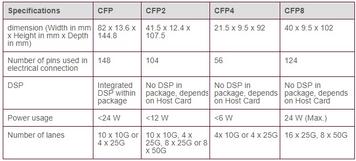10 ADSL/VDSL Interview Questions and Answers
Prepare for your ADSL/VDSL job interview with these key 10 questions and answers, covering technology, use cases, troubleshooting, and more.
Showing 25 posts (Page 1 of 5)
Advertisement
Prepare for your ADSL/VDSL job interview with these key 10 questions and answers, covering technology, use cases, troubleshooting, and more.

Prepare for your CoAP interview with these common 10 questions and answers covering protocol basics, advantages, differences from MQTT and HTTP, security and architecture.

Explore the 10 Gigabit Ethernet (10GbE) physical layer, its subgroups (10GBASE-R, X, T, W), and sublayers like XGMII, PCS, PMA, PMD, and MDI. Learn their functions and specifications.
Prepare for Network Layer job interviews with these frequently asked 10 questions and detailed answers covering key concepts and protocols.

Ace your networking job interview with these top 10 FAQs covering OSI, TCP/IP, hubs, switches, routing protocols, IP addressing, and more.
Prepare for your interview with these 10 key Physical Layer questions and answers. Master the fundamentals for engineering and job success.

Ace your WiFi 6 interview! Explore frequently asked 10 questions and answers covering key concepts, advantages, and technologies of 802.11ax.
Explore the distinctions between 10GBASE-T, 10GBASE-R, 10GBASE-X, and 10GBASE-W, covering their media, encoding, and application differences in 10 Gigabit Ethernet.

Explore 5 key advantages and disadvantages of Power over Ethernet (PoE) technology, covering cost savings, installation simplicity, and power limitations.

Explore 5 key advantages and disadvantages of Software Defined Networking (SDN), including centralized management, cost considerations, and security challenges.

Explore 5 key advantages and disadvantages of UDP (User Datagram Protocol) used in networking.
Explore 800GE routing: its key features, technological advancements, and advantages over previous generations for improved network capacity and efficiency.
Explore the distinctions between active and passive network hubs in networking, including their advantages, disadvantages, and use cases.
An overview of ARP and RARP protocols, detailing their functionalities and providing examples of ARP Request and ARP Response message fields for networking.
Explore ARP and RARP protocols, their functions in IP address resolution, and how they differ. Understand ARP requests, responses, and commands.

Explore the pros and cons of Advanced Time Division Multiple Access (ATDMA) in DOCSIS networks, including spectrum efficiency and noise susceptibility.

Explore the ATM Protocol Stack architecture, focusing on the ATM Adaptation Layer (AAL) and Data Link Layer. Understand how these layers ensure seamless data transmission.

Explore the functions of ATM switches, their role in cell switching, how they work, and how they handle operations like VP/VC mapping and congestion control.

Explore the differences between Asynchronous Transfer Mode (ATM) and Time Division Multiplexing (TDM) in this comprehensive comparison.
Explore the key differences between BroadR-Reach, 100Base-Tx, and 1000Base-T Ethernet technologies, focusing on their signaling, duplex, cabling, and features.

Explore the benefits and drawbacks of using a Brouter, a network device combining bridge and router functionalities, in LANs, MANs, and WANs.

Explore cable modem technology, its advantages over DSL, and a list of manufacturers like TP-Link, ARRIS, NETGEAR, Motorola, D-Link, Linksys, and Zoom.
Explore 5-10 advantages and disadvantages of CAN bus for in-vehicle networking and industrial applications, comparing it to other bus interface options.
Explore the differences between CBRS and WiFi technologies, including spectrum, range, security, and use cases. Understand which technology suits your needs.

Learn about CFP (C Form Factor Pluggable), its specifications, and different types like CFP, CFP2, CFP4, and CFP8 used in high-speed networking.
Advertisement